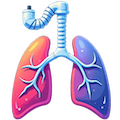LITERATURE
THYROID STORM
- Etiology
- Graves (60-80%), toxic adenoma, thyroiditis
- Precipitants: infection, surgery, CVA, MI, PE
- Sx/PE
- Fever (may be >40C), sinus tachycardia/supraventricular arrhythmias +/- high output heart failure
- Agitation/psychosis/seizures, diarrhea/vomiting/jaundice
- Diagnosis (Burch-Wartofsky score)
- Points are assigned and the score totaled. When not possible to distinguish a finding due to an intercurrent illness from that of thyrotoxicosis, a higher point score is given in order to favor empiric therapy given the potential high mortality.
- Interpretation: Based on the total score, the likelihood of the diagnosis of thyrotoxic storm is unlikely if <25, impending if between 25–44, likely if between 45–60, and highly likely if >60.
DIAGNOSTIC CRITERIA FOR THYROTOXIC CRISIS
| Points | ||||
| Thermoregulatory dysfunction | ||||
| Temperature (°F): | 99–99.9 | 5 | ||
| 100–100.9 | 10 | |||
| 101–101.9 | 15 | |||
| 102–102.9 | 20 | |||
| 103–103.9 | 25 | |||
| ≥104 | 30 | |||
| Central nervous system effects | ||||
| Absent | 0 | |||
| Mild agitation | 10 | |||
| Delirium, psychosis, lethargy | 20 | |||
| Seizure or coma | 30 | |||
| Gastrointestinal dysfunction | ||||
| Absent | 0 | |||
| Diarrhea, nausea, vomiting, or abdominal pain | 10 | |||
| Unexplained jaundice | 20 | |||
| Cardiovascular dysfunction | ||||
| Tachycardia (beats/min): | 90–109 | 5 | ||
| 110–119 | 10 | |||
| 120–129 | 15 | |||
| 130–139 | 20 | |||
| ≥140 | 25 | |||
| Congestive heart failure: | Absent | 0 | ||
| Mild (edema) | 5 | |||
| Moderate (bibasilar rales) | 10 | |||
| Severe (pulmonary edema) | 15 | |||
| Atrial fibrillation: | Absent | 0 | ||
| Present | 10 | |||
| History of precipitating event (surgery, infection, etc.) | ||||
| Absent | 0 | |||
| Present | 10 | |||
- Treatment
- Decrease hormone synthesis; Address peripheral circulation; Treat precipitator; Supportive care
- PTU (also inhibits peripheral T4 to T3 conversion) 500-1000mg load PO/IV, then 250mg Q4h (avoid in liver dysfunction) or
- Methimazole 29mg PO every 4-6 hours
- AFTER SYNTHESIS BLOCKING AGENT: Iodine (KI 8 drops q6h) (if allergic to iodine then lithium carbonate can be used)
- Corticosteroids (prophylaxis against relative adrenal insufficiency): hydrocortisone 300mg IV load, then 100mg IV Q8
- B-blockade (block peripheral effects of hormone): propranolol 60-80 Q4hr or esmolol gtt
- block release/synthesis of hormone: potassium iodide 5 drops PO Q6hr; start 1 hr after antithyroid drug
- Supportive care: volume resuscitate, respiratory support PRN
- Antipyretics: APAP, cooling blanket. AVOID salicylates (they can increase T4)!
- Decrease hormone synthesis; Address peripheral circulation; Treat precipitator; Supportive care
MYXEDEMA COMA
- Definition: hypothyroidism + stupor/confusion/coma + hypothermia + low T4 and T3 (See Scoring System in article, 60 or greater
- Sx/PE: poor memory, apathy, weakness (hypercapneic respiratory failure), fatigue, cold intolerance, constipation (can progress to ileus), dry skin, menstrual irregularities, bradycardia, hypoNa, hypoglycemia,
- Tx BEFORE LABS RETURN! MORTALITY IS 30-40%
- 1st= glucocorticoids (give bc decreased adrenal reserves)- hydrocortisone 100mg followed by 50-100 mg IV Q 6-8hrs
- 2nd= thyroid hormone (type is controversial many favor giving both)
- T4: IV 4mcg/kg, then 100mcg IV at 24 hrs, then 50 mcg/day IV (lower dose for elderly or heart patients) AND/OR
- T3: 10 mcg-20 mcg q4h x 24h then 10mcg q6h x 48h until pt begins PO T4 (lower amount if also given T4, 10mcg q8h x 72h)
- Caution in older pts and pts with CAD and arrhythmia.
- Correct hypovolemia, hyponatremia, PRN vasopressors
